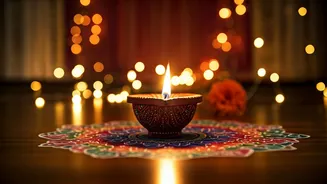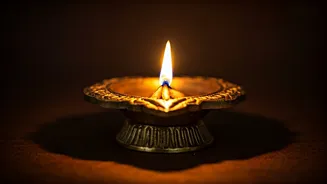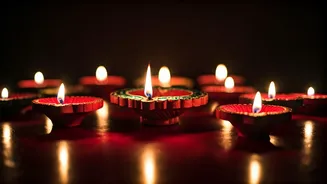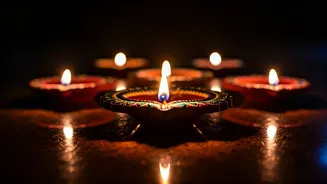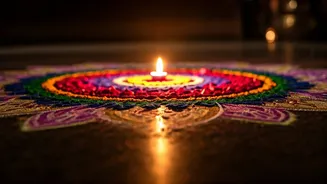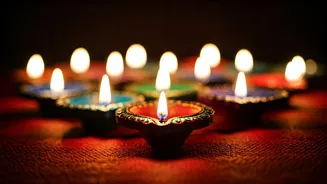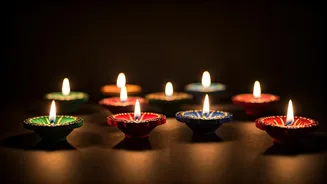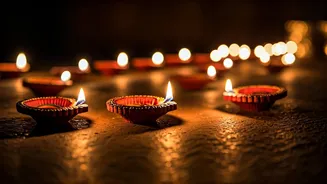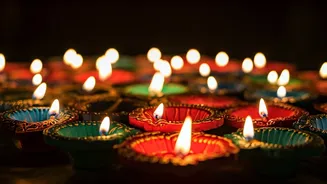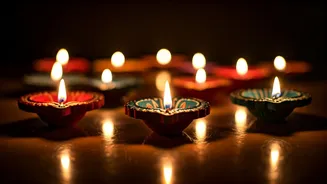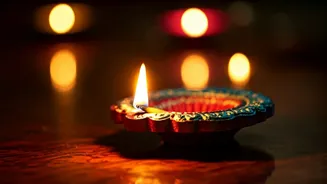Diwali's Cultural Significance
Diwali holds a deep cultural significance, rooted in ancient traditions and beliefs. It's a celebration of the triumph of good over evil, light over darkness,
and knowledge over ignorance. Different regions of India celebrate Diwali with unique customs, but the common thread is the celebration of these themes. The festival usually falls in the autumn months, and it brings people together. It is a time for cleaning and decorating homes, wearing new clothes, exchanging gifts, and enjoying festive meals with family and friends. This period is also often associated with the worship of deities like Lakshmi, the goddess of wealth and prosperity, and Ganesha, the remover of obstacles. People often perform prayers, light lamps, and share sweets as part of their Diwali rituals. The festival also signifies the return of Lord Rama to Ayodhya after his exile, making it a time to rejoice and welcome positivity into one's life. The core values of Diwali highlight hope, renewal, and the importance of cherishing relationships and cultural heritage.
Home Decor Delights
Creating a festive atmosphere at home is a key part of the Diwali celebration. There are many ways to decorate a home for Diwali. Lighting is perhaps the most iconic element. Homes are adorned with diyas (oil lamps), candles, and colorful fairy lights, symbolizing the victory of light over darkness. Rangoli, intricate designs made with colored powders, flowers, or rice, are often created at the entrance of homes to welcome guests and good fortune. People also use paper lanterns, Torans (decorative door hangings made from mango leaves and marigold flowers), and various other decorative items. Many families decorate their homes with fresh flowers, particularly marigolds and jasmine, to add color and fragrance to the environment. The placement of decorations also matters. Diyas are often placed in rows along windowsills, balconies, and pathways, illuminating the house. Rangoli designs are usually placed near the entrance or in the central courtyard, and the use of festive colors is common. With a little creativity and effort, any home can be transformed into a welcoming and beautiful space for Diwali.
Homemade Diwali Treats
Diwali is synonymous with delicious food, and making homemade treats adds a special touch to the celebrations. Traditional sweets and snacks are an integral part of Diwali, and preparing them at home is a cherished family activity. Popular sweets include ladoos (round sweets), barfis (fudge-like sweets), gulab jamun (deep-fried milk balls), and various types of halwa (sweet pudding). Savory snacks include namkeen (salty snacks), chakli (spiral-shaped savory snack), and mathri (crispy crackers). Family members often come together to make these treats, following traditional recipes that have been passed down through generations. The process of making these dishes can be a delightful and bonding experience. Many families have their signature Diwali recipes, and the aroma of freshly made sweets fills the air, creating a festive environment. The exchange of sweets and snacks is also a customary part of Diwali. These homemade treats are given to friends, family, and neighbors as a gesture of love and goodwill. It is a way to share the joy of the festival and spread happiness.
Family Activities & Rituals
Diwali offers a wonderful opportunity for families to come together and participate in various activities and rituals. Families often perform Lakshmi Puja, a prayer dedicated to the goddess of wealth and prosperity. This prayer is usually performed at home, with the family gathering to offer prayers, light lamps, and seek blessings. The lighting of diyas and candles during the puja creates a warm and inviting atmosphere, and family members often share the experience. Another important aspect of Diwali is the giving and receiving of gifts. People exchange gifts with their loved ones as a symbol of love and appreciation. These gifts can range from sweets and dry fruits to clothes and other items. Playing games like cards, especially in some communities, is a common Diwali pastime and offers a chance for families to relax and have fun together. Watching fireworks, although a growing environmental concern, remains a festive tradition. Diwali also provides an opportunity to reflect on the past year, express gratitude, and set intentions for the future, encouraging a sense of renewal and hope.
Embracing the Spirit
The true essence of Diwali lies in embracing the spirit of the festival, which is about more than just the decorations and celebrations. At its core, Diwali is a celebration of hope, new beginnings, and the triumph of good over evil. The lighting of diyas symbolizes the triumph of light over darkness, and the exchange of gifts and greetings fosters a sense of community and love. Diwali is a time to reconnect with family and friends and cherish the bonds that unite people. It is a period to let go of negativity and embrace positivity, and people often use the festival as a time for self-reflection and renewal. Many people use the occasion to help those less fortunate. Giving donations or helping those in need reflects the charitable nature of the festival. Diwali is also a reminder to be grateful for what one has and to appreciate the blessings in life. By understanding the core values of Diwali, people can make the most of the celebrations. This creates a memorable and meaningful experience.
